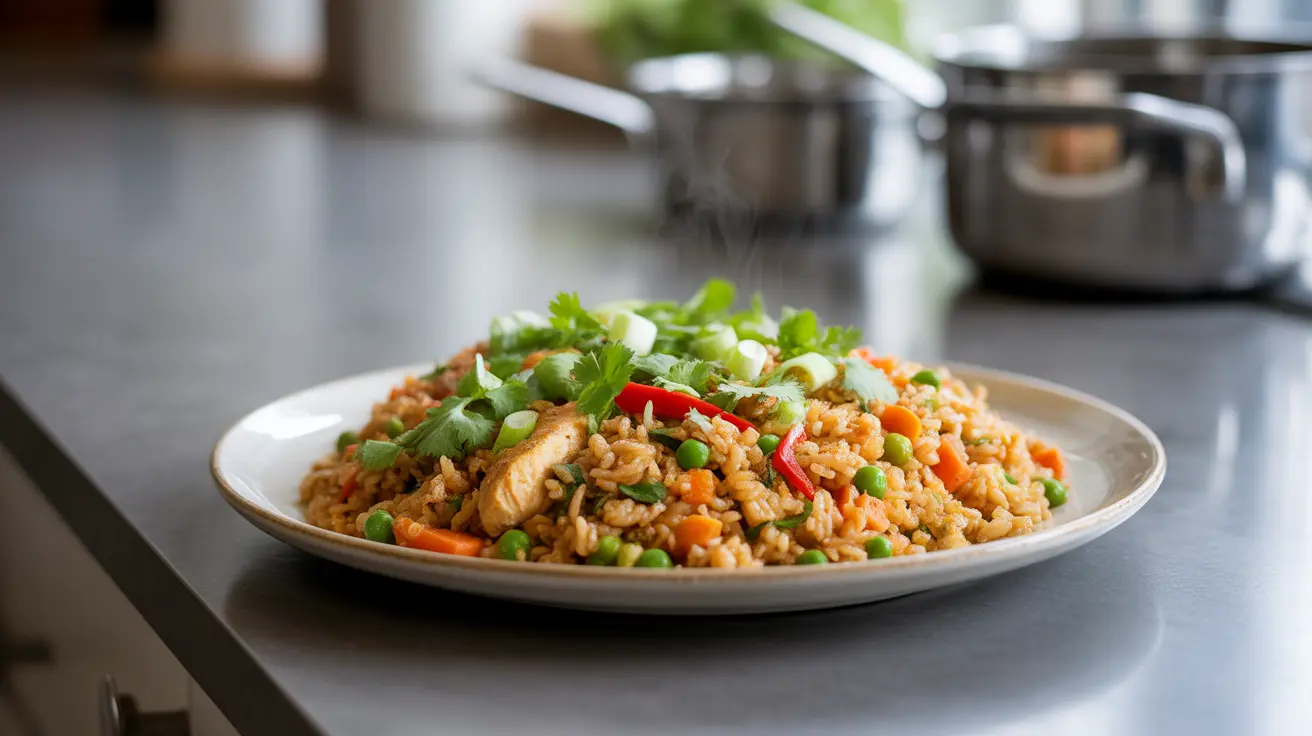Understanding the caloric content of chicken fried rice can help you make informed dietary choices, whether you're dining out or cooking at home. This popular dish varies significantly in its nutritional profile depending on preparation methods, ingredients, and portion sizes.
Let's explore the caloric content of different chicken fried rice variations and discover ways to enjoy this beloved dish while maintaining your nutritional goals.
Restaurant vs. Homemade Calorie Comparison
Restaurant chicken fried rice typically contains 600-900 calories per serving, while homemade versions can range from 350-550 calories per serving. This significant difference primarily stems from portion sizes and cooking methods used in commercial kitchens.
- Larger serving sizes (often 2-3 cups per order)
- Higher oil content used in preparation
- Additional sauces and seasonings
- Generous protein portions
Homemade Portion Control
- 1 to 1.5 cups of cooked rice
- 3-4 ounces of chicken
- 1/2 to 1 cup of mixed vegetables
- 1-2 teaspoons of oil for cooking
Brown Rice vs. White Rice Nutritional Impact
Switching to brown rice can significantly enhance the nutritional profile of your chicken fried rice. Brown rice contains more fiber, vitamins, and minerals while maintaining a similar caloric content to white rice.
Nutritional Comparison Per Cup:
- Brown rice provides:
- 216 calories
- 3.5g fiber
- 5g protein
- Higher levels of B vitamins
- More minerals like magnesium and phosphorus
- White rice provides:
- 205 calories
- 0.6g fiber
- 4.3g protein
- Fewer micronutrients
- Lower mineral content
Calorie Reduction Strategies
To create a lighter version of chicken fried rice, consider these modifications:
- Use cooking spray instead of oil
- Increase the vegetable-to-rice ratio
- Choose lean chicken breast
- Reduce sauce quantities
- Consider cauliflower rice as a low-carb alternative
Variations and Their Nutritional Profiles
Different types of fried rice offer varying nutritional benefits:
- Vegetarian fried rice: 350-450 calories per serving
- Shrimp fried rice: 400-500 calories per serving
- Brown rice chicken variation: 400-550 calories per serving
- Cauliflower rice version: 250-350 calories per serving
Frequently Asked Questions
How many calories are in one serving of homemade chicken fried rice compared to restaurant versions?
Homemade chicken fried rice typically contains 350-550 calories per serving, while restaurant versions can contain 600-900 calories per serving. The difference is mainly due to portion sizes and cooking methods.
Is chicken fried rice made with brown rice healthier than traditional white rice recipes?
Yes, chicken fried rice made with brown rice is generally healthier as it contains more fiber, vitamins, and minerals while maintaining similar calories. Brown rice also provides a steadier release of energy and better satiety.
What are the main nutritional differences between chicken fried rice, vegetarian fried rice, and other types?
Chicken fried rice typically contains 400-550 calories with higher protein content, vegetarian versions have 350-450 calories with lower protein, and seafood variations like shrimp fried rice contain 400-500 calories with similar protein levels but different nutrient profiles.
Can I reduce calories in chicken fried rice by changing ingredients or preparation methods?
Yes, you can reduce calories by using cooking spray instead of oil, increasing vegetables, choosing lean chicken, reducing sauce quantities, and controlling portion sizes. Using cauliflower rice can significantly lower the calorie content.
Does using brown rice instead of white rice make a difference in the fiber and protein content of chicken fried rice?
Yes, brown rice provides significantly more fiber (3.5g vs 0.6g per cup) and slightly more protein (5g vs 4.3g per cup) compared to white rice, while also offering additional nutrients and minerals.




